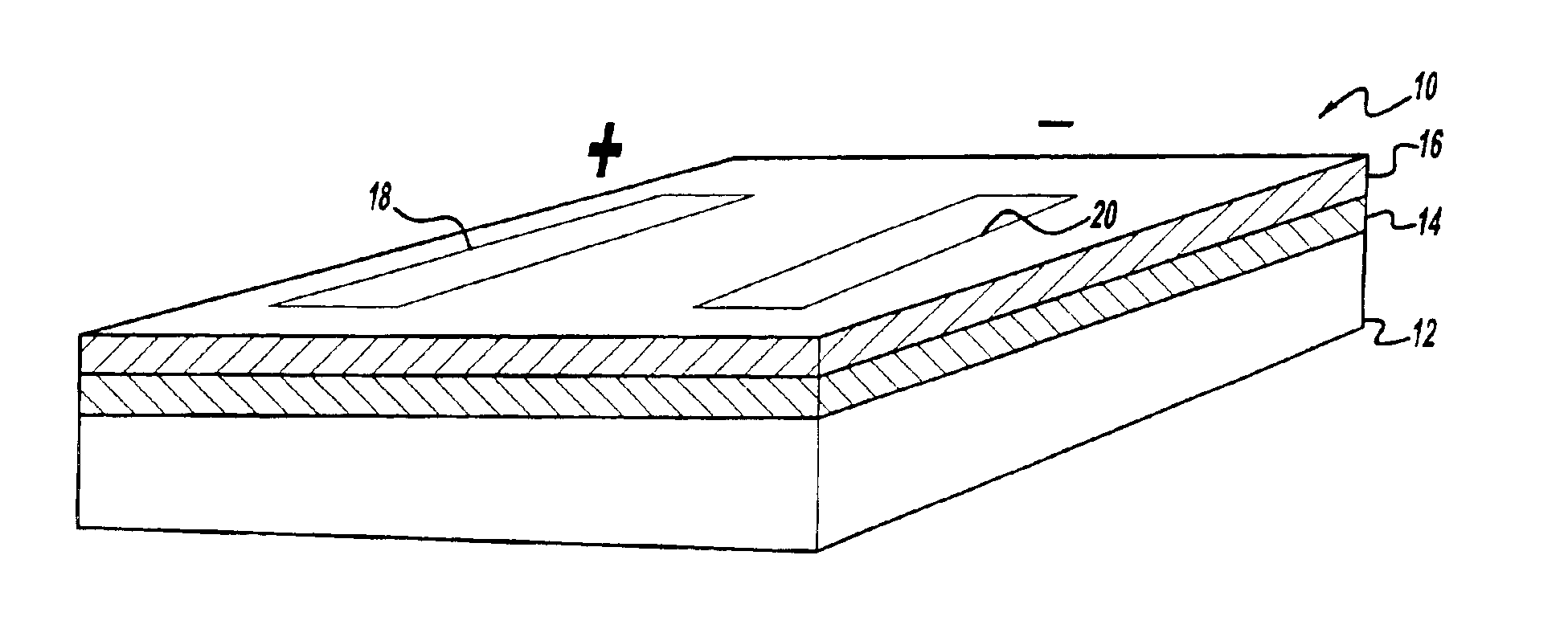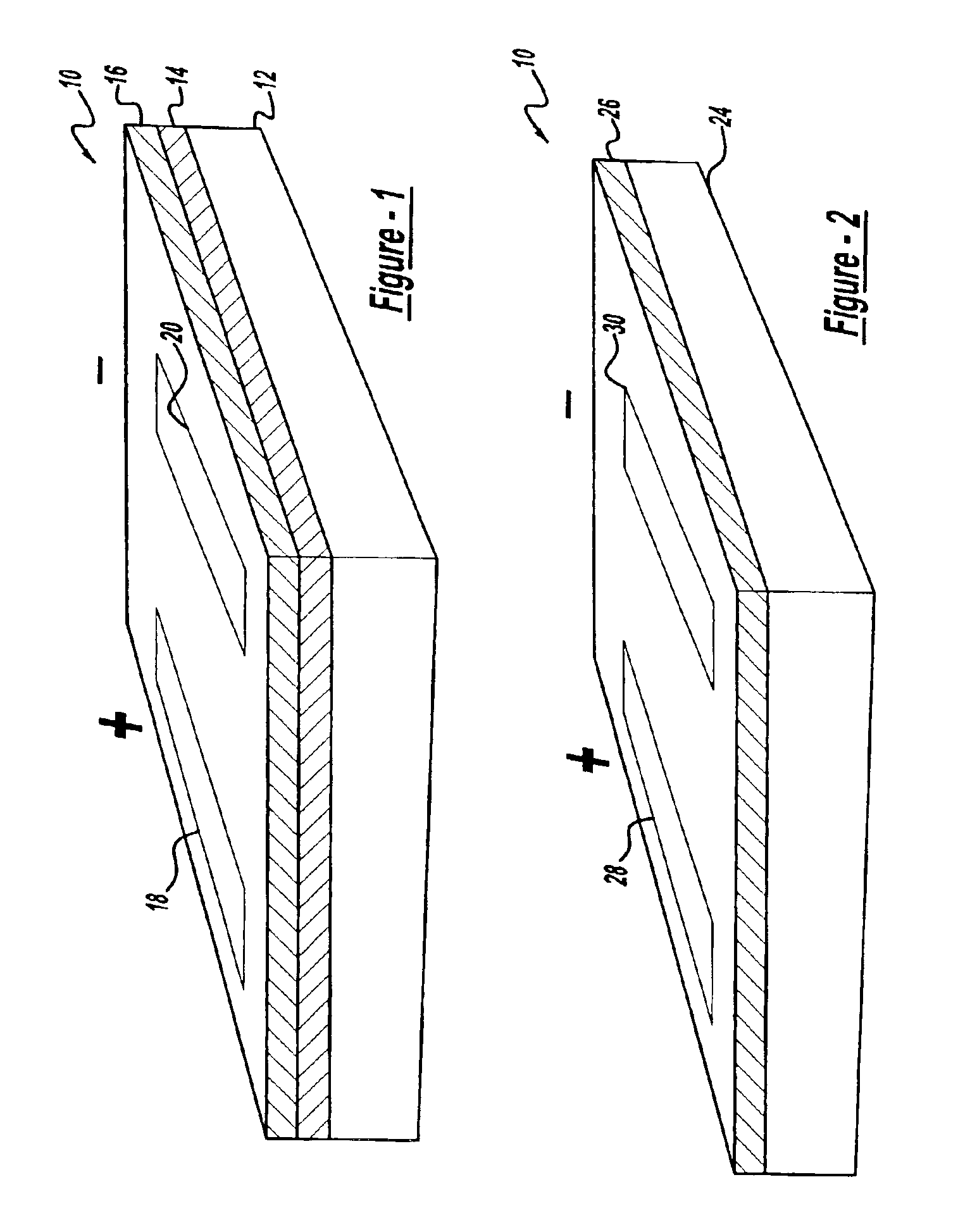Amplified photoconductive gate
a photoconductive gate and gate technology, applied in the field of terahertz photoconductive sampling of optical signals, can solve the problems of low signal to noise ratio, high limits of device sensitivity, and typical use of very slow scanning speed, and achieve low impedance, minimal rc time constant, and adequate signal to noise
- Summary
- Abstract
- Description
- Claims
- Application Information
AI Technical Summary
Benefits of technology
Problems solved by technology
Method used
Image
Examples
Embodiment Construction
[0019]The present invention relates generally to the terahertz photoconductive sampling of optical signals utilizing a photoconductor and an associated amplifier. More particularly, the present invention relates to an optimized epitaxial photoconductive structure and associated voltage amplifier for such sampling, as discussed further herein.
[0020]FIG. 1 is a diagrammatic illustration of a terahertz photoconductive semiconductor epitaxial structure having a barrier layer, termed a photoconductive gate 10. The photoconductive gate 10 includes a substrate 12 composed of GaAs. A barrier layer 14 is disposed between the substrate 12 and the photoconductive layer 16. A bipolar terahertz antenna comprised of a first pole 18 and a second pole 20 is disposed on the photoconductive layer 16. Although the first pole 18 is designated positive and the second pole 20 is designated negative, it is understood that the respective charges of the poles of the terahertz antenna may be reversed.
[0021]A...
PUM
 Login to View More
Login to View More Abstract
Description
Claims
Application Information
 Login to View More
Login to View More - R&D
- Intellectual Property
- Life Sciences
- Materials
- Tech Scout
- Unparalleled Data Quality
- Higher Quality Content
- 60% Fewer Hallucinations
Browse by: Latest US Patents, China's latest patents, Technical Efficacy Thesaurus, Application Domain, Technology Topic, Popular Technical Reports.
© 2025 PatSnap. All rights reserved.Legal|Privacy policy|Modern Slavery Act Transparency Statement|Sitemap|About US| Contact US: help@patsnap.com



